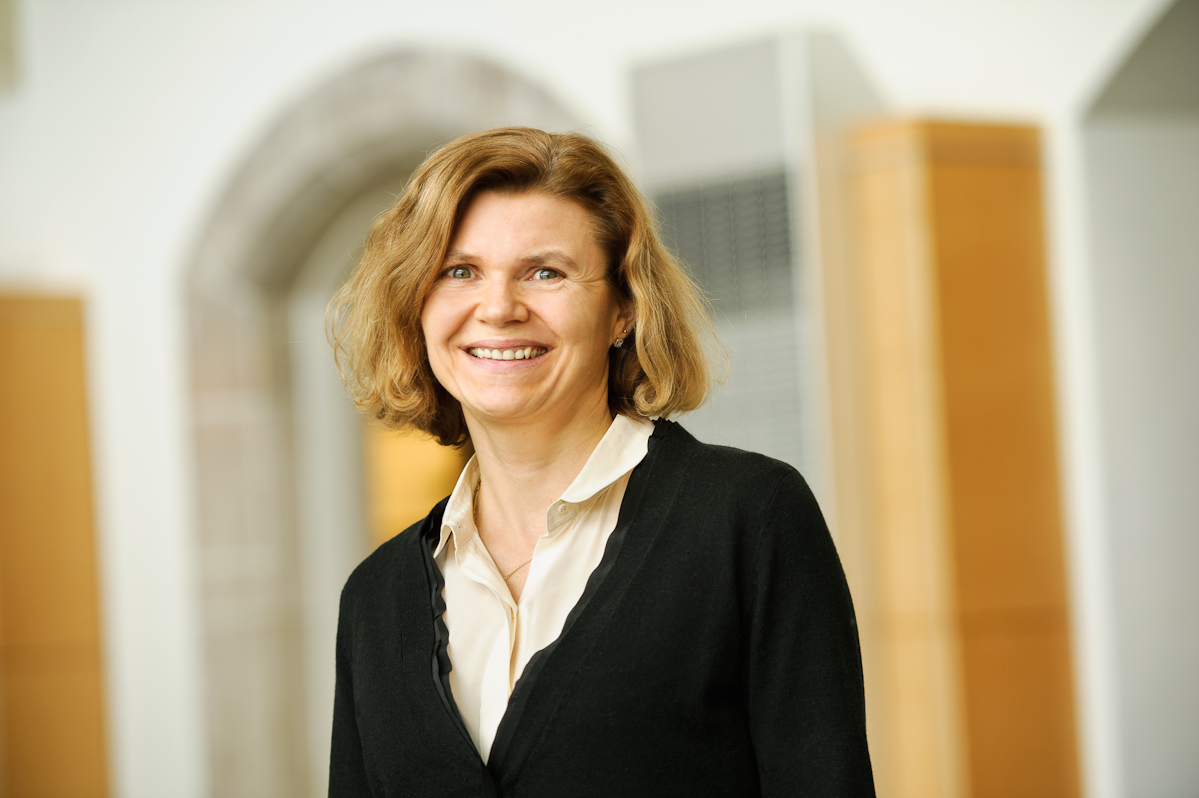
Associate Professor of Chemistry Myriam Cotten is the corresponding author of a paper that was selected as the cover story in the March 5 print edition of the Journal of the American Chemical Society (JACS).
The paper and cover art were originally published online on January 10. The paper is also featured in a JACS Spotlight titled “Solid-State NMR Reveals How a Kinky Peptide Slays Microbes,” which focuses on the significance of the research presented for a general audience.
Cotten also participated in a March 14 podcast to respond to questions about the research detailed in the article and the significance of the cover art. The paper is also featured in the Highlights section on the National High Field Magnetic Lab website. The results presented are the culmination of more than five years of work funded by Cotten’s National Science Foundation CAREER grant.
“High-Resolution Structures and Orientations of Antimicrobial Peptides Piscidin 1 and Piscidin 3 in Fluid Bilayers Reveal Tilting, Kinking, and Bilayer Immersion,” presents the first high-resolution Nuclear Magnetic Resonance (NMR) structures of helical antimicrobial peptides bound to fluid lipid bilayers.
Caitlyn Burzynski ’12, Alexander Dao ’12, Robert Hayden ’14, and William Wieczoreck ’11 are co-authors on the paper and contributed to the research effort. Cotten’s collaborators include Dr. Richard Pastor, ’71, senior investigator, and Dr. B. Scott Perrin, post-doctoral researcher, from the Laboratory of Computational Biology at the National Institutes of Health.
As noted in the JACS Spotlight, “The innate immune system has a particularly effective tool for stamping out attacks by a wide world of enemies including bacteria, fungi, and viruses: positively charged a-helical antimicrobial peptides (AMPs). The potency and broad-spectrum activity of AMPs has stoked the interest of scientists hoping to learn their secrets and develop new medications for the war against drug-resistant bacteria.”
The Cotten group focuses on piscidin 1 and piscidin 3, which are antimicrobial and anticancer peptides from fish. A significant finding of this research is that in contrast to the idealized structures shown in mechanistic studies of antimicrobial peptides, the structures of both piscidins 1 and 3 are kinked in the center, which results in stronger interactions with the lipid bilayers used to mimic bacterial targets. The structures also reveal a more pronounced imperfect amphipathicity for piscidin 1 than piscidin 3, which helps explain why piscidin 1 is more effective at mixing the lipids as needed to induce the strongest damage to bacterial cell membranes.
